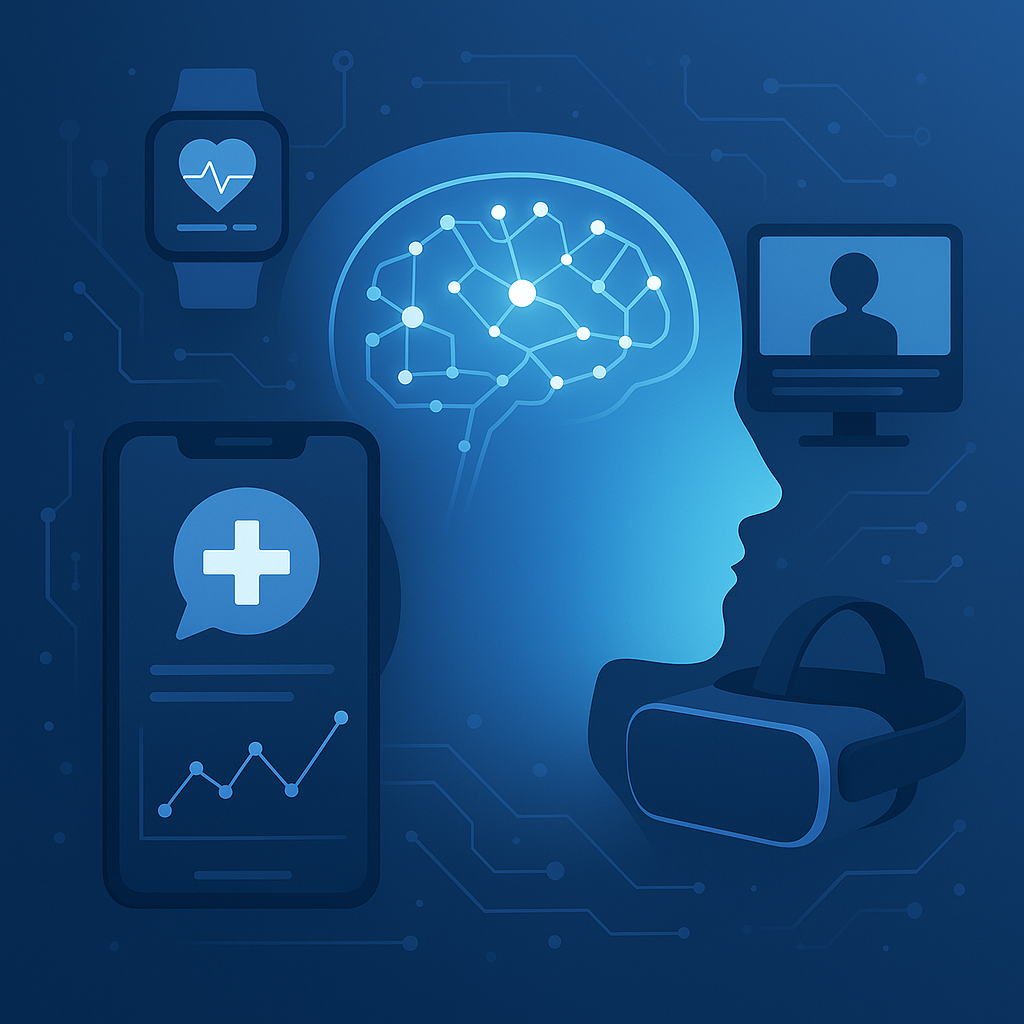November 11, 2025
How technology will change mental health—exploring AI, VR, wearables and the future of care for depression, ADHD, anxiety & more.

The phrase “how technology will change mental health” captures a sweeping transformation in the way we detect, treat, monitor, and even prevent psychiatric and emotional disorders. From depression and anxiety to ADHD, OCD, borderline personality disorder (BPD), psychosis and eating disorders, the mental health landscape is on the cusp of a major digital-inflected shift. In this article, we examine key trajectories, highlight the technologies at play, and consider the implications for practitioners, clients and systems of care.
Technology is not just an adjunct to therapy—it is becoming foundational. According to the National Institute of Mental Health, the proliferation of mental health apps and digital platforms offers unprecedented access, but also raises questions of regulation and efficacy. With telehealth, wearables, AI and virtual reality (VR) now entering mainstream mental-health workflows, the question shifts from if to how.
For example, remote psychotherapy sessions now reach rural and underserved populations; wearable sensors pick up sleep, activity and physiological markers tied to mood; and AI-driven analytics sift through large data sets searching for early signs of relapse.
At the same time, the world of mental health is seeing rising rates of conditions such as anxiety, depression and ADHD across age groups, making responsiveness critical. The promise of technology is to scale, personalize and augment—but implementation remains complex.
The move to remote care during the pandemic accelerated adoption of telepsychiatry and teletherapy: clients engage via video, text or chat from home, reducing geographic and logistical barriers.
This shift supports treatments for depression, anxiety, OCD and BPD, especially when access to in-person care is limited.
AI/ML models are now being developed to detect subtle signals of mental illness—such as speech patterns, facial expressions, wearable sleep/activity trends and digital behaviour. For example:
VR and AR are being applied to phobia exposure, anxiety and even eating disorders: creating safe, controlled virtual environments to practise coping skills or challenge maladaptive beliefs.
Wearable devices (smartwatches, fitness bands, even smart textiles) can monitor physiology (heart rate variability, sleep fragmentation), movement and even speech cadence—offering continuous, passive data streams. These digital biomarkers may inform assessments of depression, anxiety or ADHD.
Digital therapeutics platforms deliver evidence-based interventions (for example CBT-based modules, exposure tools, guided self-help) via apps, often with personalization via algorithms.
These technologies enable more refined, individualized care pathways rather than one-size-fits-all.
For depression, technology can aid in early detection (changes in sleep/activity patterns on wearables), support remote therapy (via app or video) and deliver adjunctive digital modules (for mood tracking, behavioural activation). The combination of telehealth and sensor data allows for more agile intervention.
Technology is particularly suited to anxiety disorders and OCD. VR exposure therapy offers controlled contexts for confronting fears or intrusive thoughts; apps provide real-time CBT exercises and mindfulness tools; wearable sensors detect autonomic arousal spikes that precede panic.
In ADHD (both youth and adult), digital tools can support ecological momentary assessment (EMA) of attention lapses, use gamified apps to build focus, or deploy wearables for sleep/activity monitoring (given how sleep affects ADHD symptoms). Predictive analytics can flag risk of non-adherence or comorbidity.
BPD often involves emotional dysregulation, impulsivity and self-harm risk. Technology can provide ecological tracking of mood swings, deliver dialectical-behaviour-therapy (DBT) skills reminders via mobile, and alert clinicians when sensor or behavioural triggers suggest escalation.
For psychosis, early detection remains a critical challenge. AI models may highlight anomalous behaviour or language patterns, enabling earlier intervention. VR may help patients rehearse social interactions, and remote monitoring may aid in adherence and relapse prevention.
Technology for eating disorders includes apps for meal tracking, sensor-based monitoring of physiological stress, VR for body-image exposure, and teletherapy to widen access. These interventions can complement in-person treatment and support long-term monitoring.
For a clinic such as Integrative Psych—or any mental-health practice looking ahead—there are key strategic steps:
The future of technology in mental health will likely feature several converging developments:
Yet with this growth comes responsibility: ensuring that technological solutions do not supplant human empathy, that privacy is protected, and that we remain vigilant for unintended consequences.
At Integrative Psych, we are at the vanguard of combining evidence-based clinical interventions with technology-enabled care. Based in Chelsea, NYC and with a second location in Miami, our team of doctoral-level therapists, psychiatrists and clinical informatics specialists bring integrative, personalized care to clients facing depression, anxiety, ADHD, OCD, BPD, psychosis and eating disorders. If you are curious how augmented care—incorporating remote monitoring, digital therapeutic modules and hybrid sessions—can elevate your mental-health journey, we invite you to explore our practice, meet our team and schedule a consultation.
Learn more about us → integrative-psych.org

We're now accepting new patients
